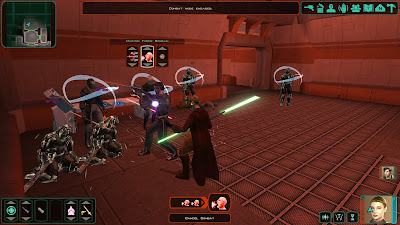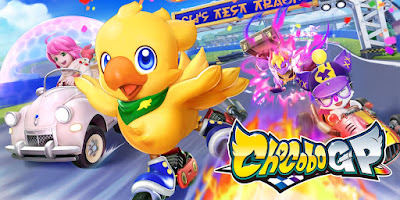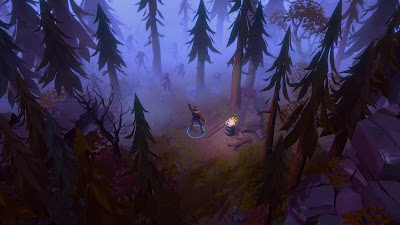It's not the end of the world. But you can see it from here.
Halo, Fallout, League of Legends, Assassin's Creed- Elden Ring? Okay, so I may have read the Elden Ring one just hypothesised by a journalist with a much more active imagination than I, but I now I can't get the possibility out of my head. Gaming shows upon gaming shows, descending on our hobby with contracts and contempt to rip away our stories in order to bastardise them on the world stage. And no, The Witcher isn't a game-tied show, it's based solely on the books. We've seen the Halo show neatly demonstrate that the problem with these shows isn't the budget or the ability to drag out the visual prowess of the gaming art teams, and we've seen from Arcane that a show doesn't even need to pull from the narrative of a story heavy game in order to be spectacular; so with examples from either end of the spectrum, can we take a guess as to what the future will hold for all of us who love our games and want them treated with respect in the coming TV adaptation apocalypse?
I've talked enough about the Halo show, and Arcane has enough praising press on it to turn anyone green with envy; so instead I want to take a look at what one might expect from the unreleased. Take the Fallout show which has apparently not disappeared into development hell and is actually being made with actors, scripts and everything! I've mentioned before how I'm actually somewhat hopeful for a series like this because of the way that the material holds just enough unique charm to it in order to appeal to a mass audience; although I do wonder if a series about the aftermath of a nuclear war is going to land so well in this particular political climate. I see potential here, but we're receiving a first hand lesson right now how 'potential' does not automatically equal 'success', from Paramount. There's still an uphill battle that these adaptations need to face and I think a big part of it comes down to respect.
There's a prevailing assumption whenever it comes to video games in the mainstream, one that was drummed up in the puritanical panic of the eighties, nurtured in the anti-gaming mob of the nineties, and still seems to have vague vestiges in the places of import today. It's the assumption that games are beneath other mediums of entertainment. For an industry that has grown so much, evolved nearly ceaselessly, and redefined itself decade after decade; it's obviously reductive to view gaming through the same lens as forty years ago, but some absolutely still do. And they tend to be the one's in power. To them, video games are some trite and stupid medium without soul or artistic merit behind it and it's stories; where the height of their evolution has been in disguising their trivial nature with fancier graphics and louder ad campaigns. These people still think all video games have 'points counters' in the top part of the screen that all players compete over.
And this perception is what will poison these adaptations time and time again, as people come to these properties with the narcissistic belief that they are elevating them by freeing them from the chains of being a game. What was it that the Halo Showrunner said? "I never felt limited by it being a game."? What exactly is limiting about that? The way that games offer control and direction to the audience? The malleable nature of the product and how it's very experience shifts with each play? What are the limitations that are being overcome by making a TV show that totally disregards the game-related portion of this property? It becomes almost funny to compare these words against the finished product once it releases and people start to understand why this thing worked better at a game. Such as the Assassin's Creed movie wherein the movie makers tried to juggle two storylines like the laymen narrative heads at Ubisoft do every other year, only to realise that the time constraints of a feature-length movie really requires a much more skilled head in the directors chair. Otherwise you end off with a lukewarm prison movie intercut with disparate and fleeting action sequences fuelled with a vague purpose that no one remembers. Fundamentally, Assassin's Creed proved that even the series' narrative works better as a game. Do you think that's a concession that any of these upcoming show runners have ever even dreamed of accepting?
"No, we are the kings of narrative!" They insist. "The directions we take and the decisions we make mark the height of the visual storytelling artform, all else is just childish, artless, grasping. By our hand it is decided that Master Chief's indistinct face is immaterial, we'll take off his helmet. Under our direction do we ensure that Agent 47, through both of his movie adaptations, is no longer the carefully planning perfectionist assassin, but a bumbling action hero with super-powered shooting skills. And should we so decide, Uncharted will waste half of it's running time prowling around the very-charted streets of Barcelona." Just imagine this breed of 'creative' getting their hands on adapting something as traditionally transcendent as Dark Souls for an adaptation! There would be flashbacks every other scene, Gwyn Lord of Cinder would have an entire monologue before the end, Billie Eilish would make the theme tune- it'd be perfect; I can't wait.
None of which is to totally write off all adaptations before they're made, as disgruntled as I sound, because Arcane proved that it can be done right. I think the point of contention comes from the fact that so many of these adaptations are helmed by creatives who think it their right and duty to supplant the inferiority of the source material with their talents. They believe themselves to know better than the developers who nursed this franchise because those guys were all just clueless code monkeys throwing anything that sticks at the wall whilst they are the true artists. Whereas treat a game adaptation as one would a book adaptation, where the intention is be supplementary and respectful, and suddenly we have a much healthier relationship to start building these shows and movies off of. But in order to reach that harmony, there needs to be a concession of superiority else we're not going to get anywhere.
The Fallout show is one that I have my eyes firmly set-on, because given the amount of rapid attention that Bethesda pays it's two flagship franchises, I can't see them settling for being mere creative consultants on the Fallout set. I can see Bethesda really getting their hands dirty in the production of this show in order to make sure it's done right, because they themselves know first hand the sort of ire the public will drum up if you start insisting that Ghouls don't need to eat to survive, or that Jet is a pre-war pick-me-up. I think the example that show will set holds the ability to reverberate in all future projects, especially if it manages to do as well as I think it might. Maybe then, similar as we did after Game of Thrones, a slew of high quality adaptations will enter production simultaneously in order to capture that lightning before the bottle breaks. (I just hope the Fallout series doesn't go the way of later Game of Thrones.)
Sonic the Hedgehog, Detective Pikachu and even that Mortal Kombat film to some extent, all show the promise of this collaboration between traditional media and gaming. There is a space for successful crossover, and I know that for a fact. I think that is why I find it so hard to just write off this movement entirely, to throw away any new show that gets announced; because I know it can be done right. We don't need Marvel movie levels of representation over here (despite what Nintendo are trying to cook up with their Mario extended movie-verse) but a bit of love on their end can lead to wonders for all invested parties, I know it can. So how is the future going to pan out for game adaptations? Rocky, with a lot of pitfalls and some utterly terrible adaptations on our horizon, but somewhere, in the distance, there is that glimmer of hope. And that's what keeps me enduring the crap with a grimace and a promise. Good god, I hope this Halo series doesn't get a season 2. Hmm? That's already been confirmed? Crap.























